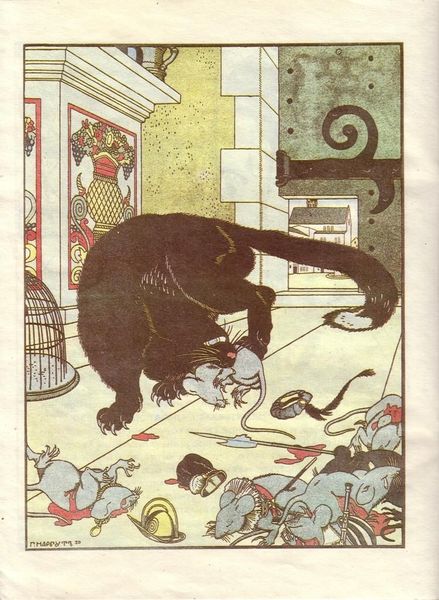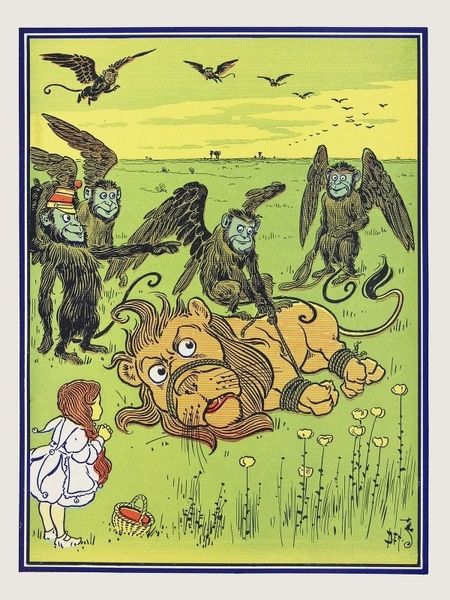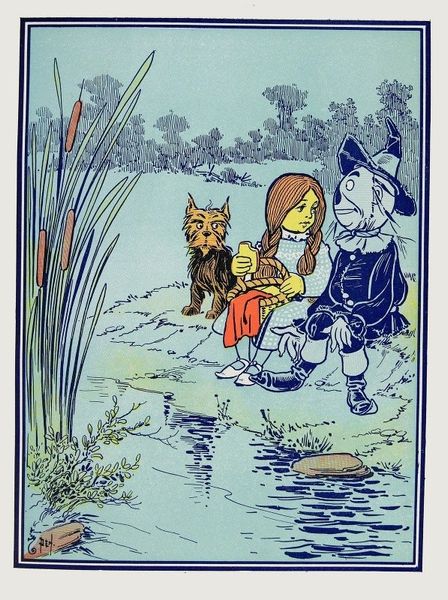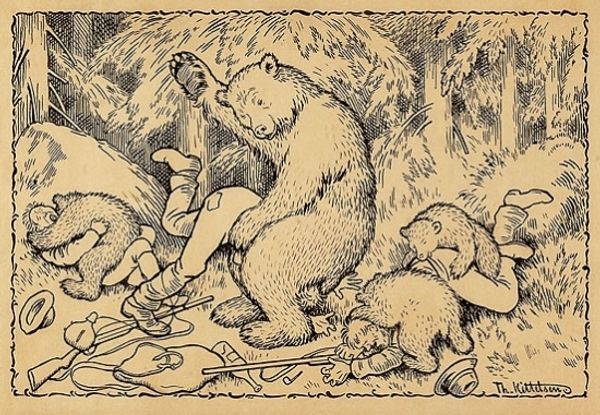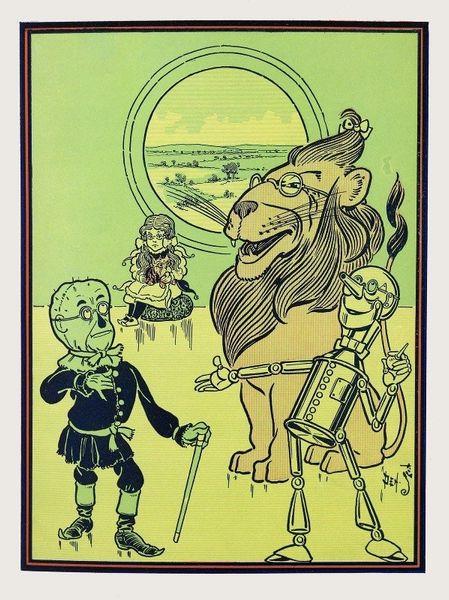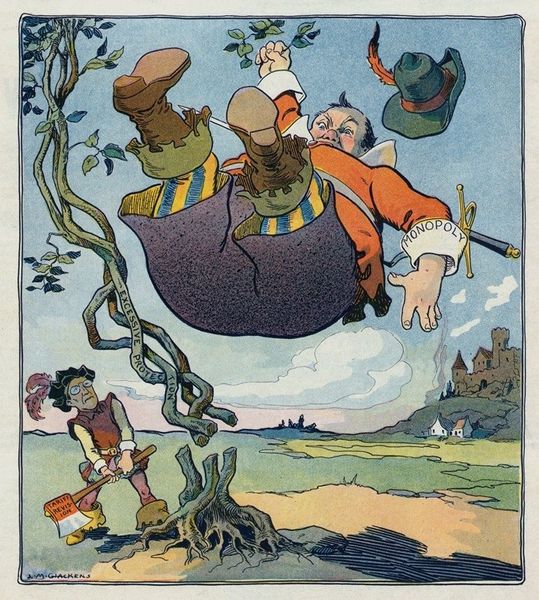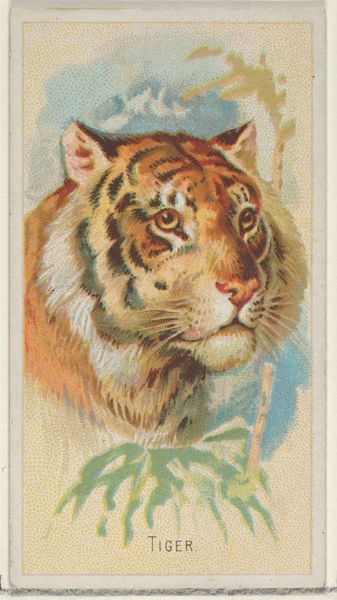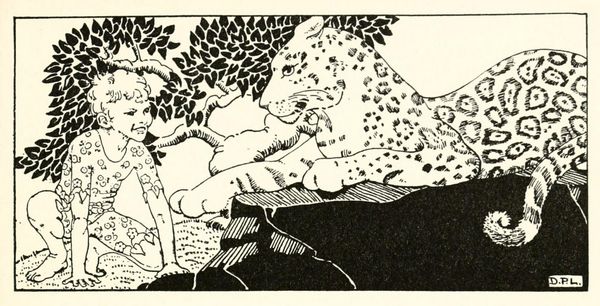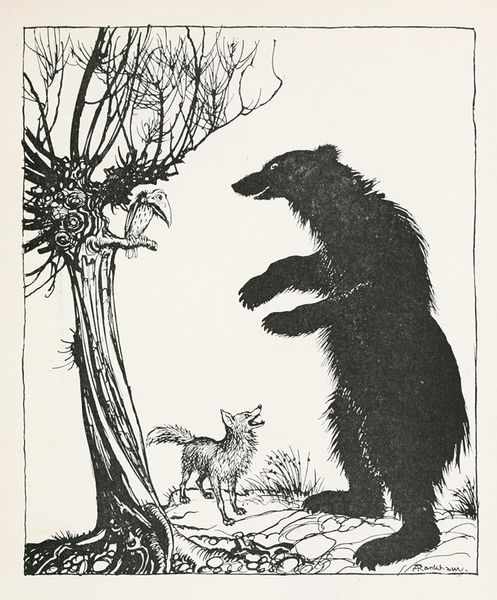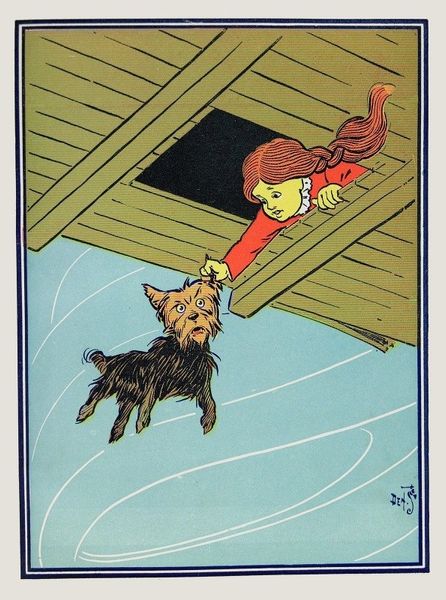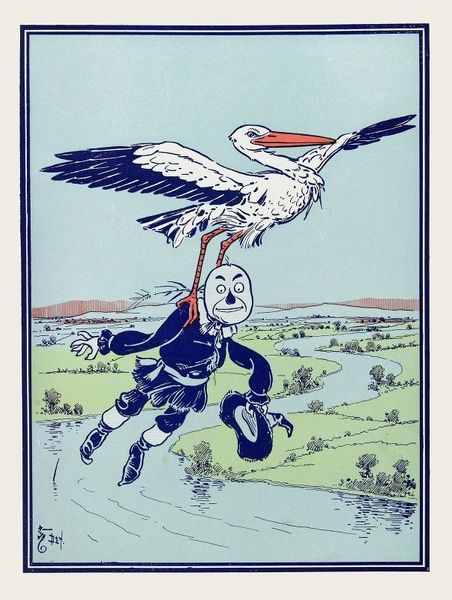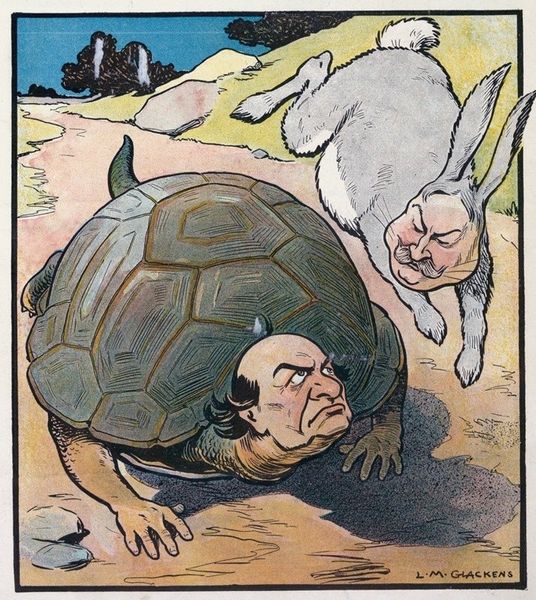
#
caricature
#
caricature
#
folk-art
Copyright: Public Domain: Artvee
Editor: "The Tree Fell With a Crash Into the Gulf," created around 1900 by William Wallace Denslow, shows these comical, exaggerated tigers in peril. It's playful and lighthearted, but I’m curious – what else can you glean from this illustration? Curator: Well, it's important to see this work within its socio-historical context. Denslow was the original illustrator of "The Wonderful Wizard of Oz." Look at how these tigers embody anxieties around power structures. They are literally falling while the figures of Oz look on, not acting. Is it a critique of those in power? What do you think about how Denslow's folk art style amplifies this theme? Editor: That’s interesting! I hadn’t thought about the passivity of the characters in the background, or even read the animals as more than comical figures. The falling does seem pretty symbolic now. Curator: Exactly! The choice of rendering these tigers, seemingly native to India, in such a melodramatic state, raises questions about Orientalism and the representation of the 'other.' Consider the impact of the illustration within children’s literature: What messages about vulnerability and authority are being subtly conveyed to young, impressionable audiences? Editor: So, even seemingly innocent illustrations can have these embedded social critiques. It definitely pushes me to consider artwork as part of larger, and sometimes hidden, dialogues. Curator: Precisely. It demonstrates the power of art to not only reflect, but also shape, our understanding of the world and its complex power dynamics.
Comments
No comments
Be the first to comment and join the conversation on the ultimate creative platform.
